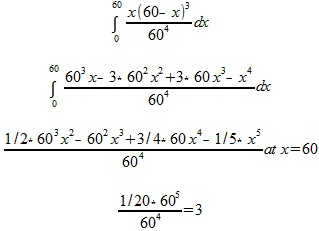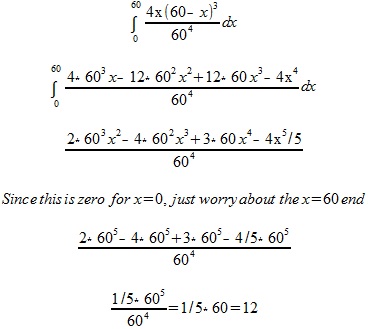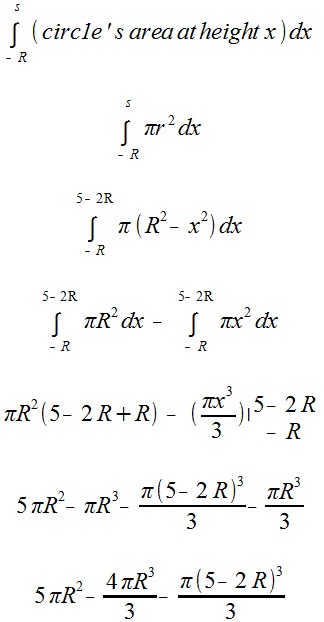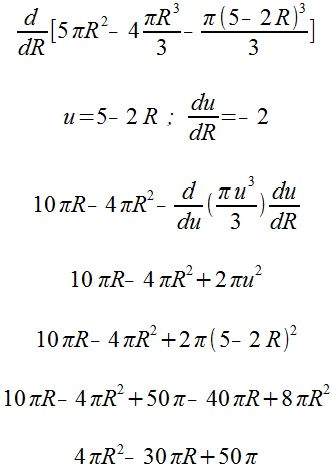-
Posts
1756 -
Joined
-
Last visited
-
Days Won
25
Content Type
Profiles
Forums
Events
Gallery
Blogs
Everything posted by plasmid
-
Addendum to this answer:
-

How would you cross puzzle land? Part V
plasmid replied to plasmid's question in New Logic/Math Puzzles
That phrase was posted on Brainden?!? Regarding pumping, I'm not sure how that would work out in practice. If the starting situation has the acrobat on a platform with the trapeze rope essentially going horizontally, then if you add more force to the swing you'll end up going above horizontal on the other side before gravity pulls you back down, and you wouldn't be swinging like a pendulum but more like a weight on a rope that was just held out somewhere in space and dropped. So you could pump exactly once before letting go. And motorizing the pivot points of the trapezi is certainly enough of a cheat to qualify as a Puzzle Land answer. -

How would you cross puzzle land? Part V
plasmid replied to plasmid's question in New Logic/Math Puzzles
Correct, initial velocity is zero. The answer is independent of whatever value you choose for gravitational force, but you could use 9.8 m/s2 if you like. -

How would you cross puzzle land? Part V
plasmid replied to plasmid's question in New Logic/Math Puzzles
An acrobat can release the trapeze at any point and follow the usual laws of physics (of a point mass without wings or rocket engines or such) until coming into contact with the other trapeze bar. Will add a drawing next if that would help. -

How would you cross puzzle land? Part V
plasmid replied to plasmid's question in New Logic/Math Puzzles
The non-cheating solution I have doesn't involve the sorts of things you speak of. The acrobats can be considered as points that can attach to and release from a trapeze at a distance rope length from the trapeze's axis, and that just follow Newtonian mechanics aside from being able to grab onto the trapezi (or whatever the plural of trapeze is). -

How would you cross puzzle land? Part V
plasmid replied to plasmid's question in New Logic/Math Puzzles
I came up with a solution where the distance between the platforms could be greater than height * 4, even with a level floor. Having the platforms as far apart as you want and making the acrobats hoof it across the circus grounds counts as a legitimate cheating (and thus paradoxical) answer, and is so far the best for others to try to top. -
Right on, Wilson
-
Not a hockey goalie, fisherman, or cartographer. I like how goalie fits with these clues very well even though the clues aren't interpreted in the way I had in mind. But the second stanza is difficult to fit with that answer. I like the reasoning behind the fisherman answer as well, but once the answer is revealed there will be a much clearer interpretation of the clue about Atlas and the last line's use of the word dearth implies that two would be an unacceptably low number (and for the sake of hinting, the dearth in the last line refers to Atlas' feet from the previous line). A cartographer is actually closer to my answer than you might think.
-
Indeed not an asteroid impact. I'm thinking that once the answer is seen, all of the clues will become visible and make sense. (There might be hinting in here.)
-
Not a blacksmith; while it could certainly fit parts of the riddle, the last stanza would seem to go unexplained. Also not a fencer, as I would consider that to be too similar to the decoy answer of not being a pirate. Not a lobster trap. I'm afraid I don't know enough about them to be able to judge how well it fits the clues, but that also of course means it's not what I was thinking of. Hint:
-
Hi DD. Not a jigsaw; while in some ways it's on the right track, I'm looking for something with a more specific interpretation for the opposing sword and masking of thieving hand.
-
I don't have a full solution, but this might help get things started. After that point, it gets too abstract for me to continue comprehending.
-
Question #2
-
This is a way to calculate probabilities exactly (if you're willing to ignore leap years), although it uses an iterative approach rather than providing a closed form solution.
-
-
-
Answer to question 1
-
How did you get that Vsw decreases with R in the Iceberg 2 regime? It's true for the case of theta = 15, but I don't think it's true in general -- in the extreme case of a goblet with theta = 89.999 degrees (where the goblet is very close to a flat plane) I'd imagine a sphere with a large radius would get more underwater than a sphere with its center below the surface.
-
Although I'm not that, it's probably worth noting that that answer seems to have picked up on the "thieving hand now masked" clue.
-
This is a solution if the sides are 30 degrees away from vertical. There is another way to go about solving it that makes it more tractable if you have an arbitrary angle away from vertical, but I found this result particularly interesting. Unfortunately spoilers are still not working at the moment and figures can't be hidden by making them white, but at least the text will be hidden as white so you can click here and press Ctrl-A (or whatever the equivalent on a Mac would be) if you want to make it visible.
-
Clarification: when you say the goblet has a 30 degree angle at the base, do you mean it forms a V and there are 30 degrees between the \ and / of the V, or do you mean that the sides are 30 degrees away from vertical? If the former (like I'm currently running with), the math gets quite hairy. If the latter, it should be much more tractable.
-
Ok, I see what you're saying now, and I think your proof is correct. For what it's worth, this is what I had in mind. A solution set of weights cannot have both odd and even weights, because then omitting either an odd weight or an even weight from the balance must leave an odd amount of weight on the pans left to balance, which is impossible. Suppose you had a set of weights that is a solution. If you add a constant value to every weight, or if you multiply every weight by the same factor, then the resulting set of weights must also be a solution because it won't affect the scale's balance. Call the largest weight in the proposed solution w. Find the smallest power of two that's greater than w, and add (2n-w) to each weight so now the largest weight will be 2n. Next, repeatedly divide all of the weights by 2 until one of them is odd. If there are any weights smaller than the largest weight, then they will become odd before the largest weight becomes odd because the largest weight is a power of 2, and you would be left with a mix of odd and even weights to show that the set of weights is not a solution.
-
Occasionally I have days where I could swear I'm one of those, but for this riddle that's something I'm not.






